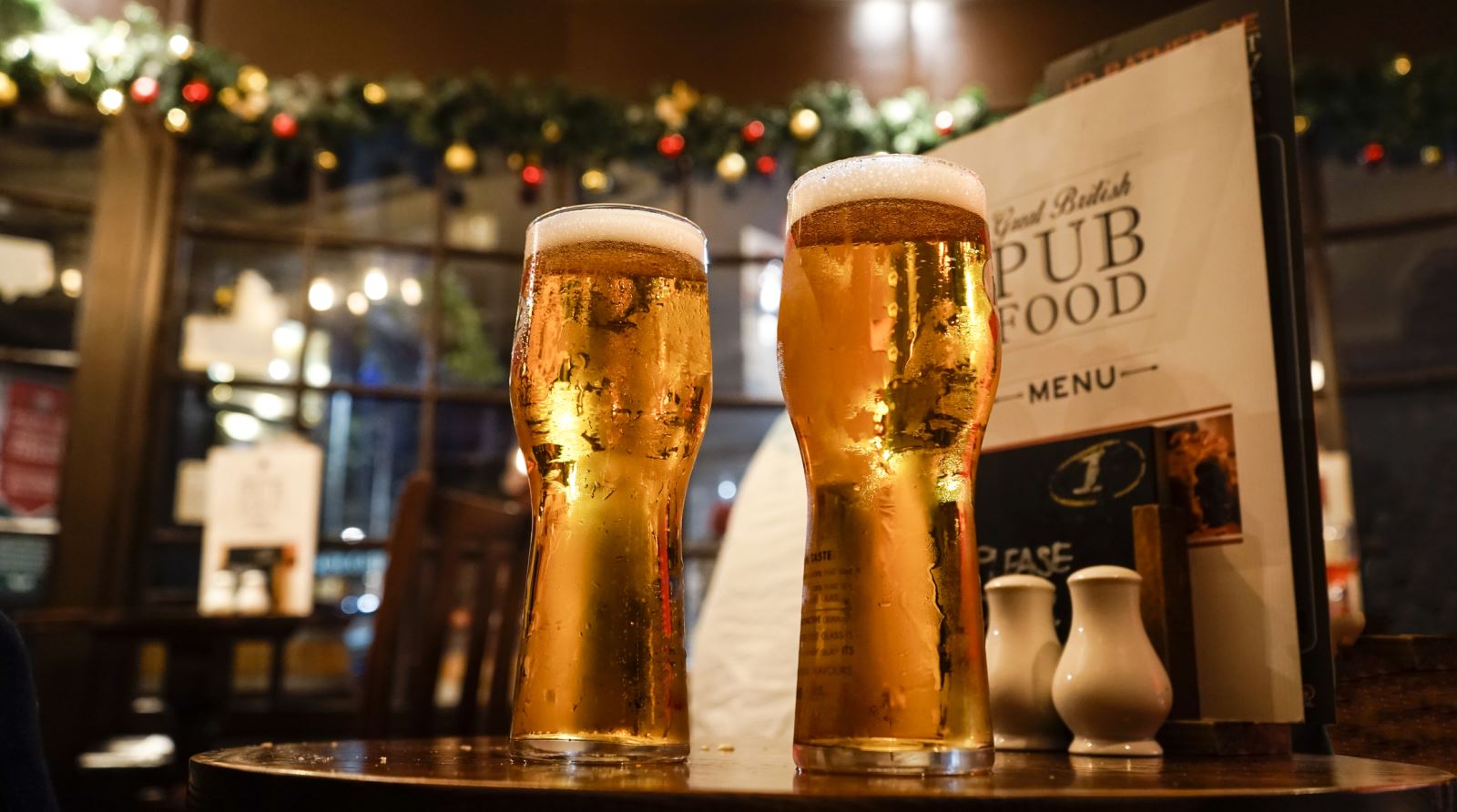Is it too early to start thinking about Christmas in September? If you run a pub or a bar, the answer is no. By planning well in advance, you’ll be able to take full advantage of the seasonal increase in spending on drink and food. This doesn’t mean that you should be putting your Christmas decorations up in September.
Last year a number of pubs were ridiculed on social media for doing this: “I’m still traumatised”, said one Twitter user after finding a Christmas tree in their local pub more than three months before Christmas. So: hold off on the decorations (more of which later). But preparations and publicity? Definitely.
If you have a space such as a function room that can host office Christmas lunches or work parties, now is the time to start taking bookings. Increasing numbers of pubs now have chalkboards both inside and out, so this is a good way of drumming up bookings. Our you could place laminated leaflets on the bar and on the tables around your pub.
It’s often worthwhile getting a local print shop to produce these – they will have a professional, glossy look. Bear in mind, too, that some people are happy to leave their Christmas celebrations until January, so be prepared to stretch your offering into the New Year.
Planning your Christmas menu

If your pub serves food, you will need to start planning your Christmas menu soon. This will almost inevitably involve turkey, but it’s worth thinking about how this can be served: rather than cooking a whole turkey, with the risks that the meat will become dry, your kitchen could look into dishes such as turkey parcels or turkey tornedos – pieces of turkey breast meat wrapped in bacon or pancetta; these can be prepared in advance and cooked or reheated to order.
And remember that diners these days are becoming more adventurous with their Christmas fare: meats such as rabbit and venison are increasingly popular. Cooked in stews and casseroles with seasonal berries and herbs, they have a lovely wintry warmth. Remember, too, that vegetarianism is no longer a fringe choice – a recent poll put the number of vegetarians in the UK at more than 3 million, which is nearly 6 per cent of the population.
Seasonal drinks can add to your offering: winter ales, mulled wine and mulled cider. If your pub is one of the increasing number that serve coffee, there will be spiced Christmas blends available – the aroma of these will add to the atmosphere. If you are serving mulled wine, you will need to think about how to keep it hot.
Smell is a vital part of Christmas: the scent of pine from Christmas trees and from spices such as cloves and cinnamon helps to create a warm, welcoming atmosphere. Scented candles with these and other seasonal scents can be placed on tables or windowsills. These will emit fragrant scents and give off a soft, romantic glow.
Trees and baubles

On the wider question of decorations: Christmas can very easily be made to look cheap and tacky. Many of us wince at the memory of Christmases marked by faded paper chains, tatty tinsel and scuffed baubles. These days, the trend in Christmas decorations is: less is more. It’s likely that someone on your staff will have a creative streak, so it would be rewarding for them to let them have a say in your decorative scheme.
Remember that although Christmas is a Christian festival, it also has pagan roots: the tree brought indoors was traditionally a way of keeping greenery alive until spring arrived – a German tradition that was popularised in the UK in the Victorian era by Prince Albert and Queen Victoria. Likewise evergreen holly and mistletoe. So sprigs of greenery, used sparingly, can create a tasteful Christmas atmosphere. If you have space for a tree, take care to dress it properly, and don’t overdo it.
Hold back on the tinsel. The ideas website Pinterest is a goldmine of decorating inspiration. Rather than buying mass-produced decorations and baubles, it’s worth looking at e-commerce website such as Etsy, where hand-crafted items such as baubles (as well as candle holders) created by individual makers are available. Now is the time to start sourcing these items.
An unusual Christmas decoration that would be particularly suited to the pub environment would be hops. A vital ingredient in the making of beer, hops also have attractive flowers and leaves. In their dried form, strings of hops, known as “bines”, can be bought as decorations that would be ideal for a pub at Christmas. A quick Google search brings up several suppliers of fresh and dried hop bines and garlands.
Another attractive Christmas plant is the poinsettia, with its vivid red flowers against green foliage. These are inexpensive and the flowers last for four to six weeks, so a well-timed purchase of a batch of these plants will work its Christmas magic over the festive period.
Glass vases or containers filled with small Christmas baubles and pine cones – perhaps spray-painted silver or gold – are an increasingly popular decorative idea. Now is the time to get to work preparing pine cones and sourcing containers and baubles.
Let there be lights

Christmas would not be Christmas without fairy lights. And the good news for those with memories of flickering, tacky and unreliable strings of tangled lights is that today’s LED lights are reliable and come in a spectrum of styles and colours. Strung around your bar area, along window ledges or even draped under the ceiling, they will add a twinkly glow to your pub. If you have an outdoor area with space heaters that’s used in the colder months, strategically hung fairy lights can give it a grotto-like appearance. You could also have a supply of blankets and cushions available to keep customers cosy and comfortable outside. Remember too that today’s outdoor pub furniture is durable and weatherproof.
An all-singing, all-dancing Christmas
To create a Christmas buzz, you could hold special events in your pub. Is there an amateur choir in your neighbourhood? Choir singing has become a hugely popular activity, so the likelihood is high that there will be a nearby choir. You could invite a choir to perform Christmas songs and carols in your pub; they might accept payment in return, or perhaps just free drinks for the evening, or it could be a charity fund-raiser. Some choirs are simply grateful for the chance to perform in public; also the exposure helps them to recruit new members. But you will need to start looking into this now, as it can take several weeks for a choir to rehearse a repertoire of songs. Song sheets could be printed off and circulated so that your customers can join in on some of the more familiar numbers.
Other traditional forms of Christmas entertainment include handbell ringing and Morris dancing. If you have space – a car park, say, or a pub garden – you could invite a troupe of Morris dancers to perform Christmas dances and mummery. Again, this could be a charity fundraising event.
Christmas warmth
Charity is always at the forefront of people’s thoughts around Christmas time, so your pub could nominate a chosen Christmas charity and use events such as these to collect money for it over the Christmas period. You could even ask your customers to vote for their chosen charity from a list of nominations. A running total of money collected could be published on a chalkboard and on your pub’s social media site. Christmas is about warmth, and a Christmas charity appeal will add to that sense of warmth and fellow feeling.